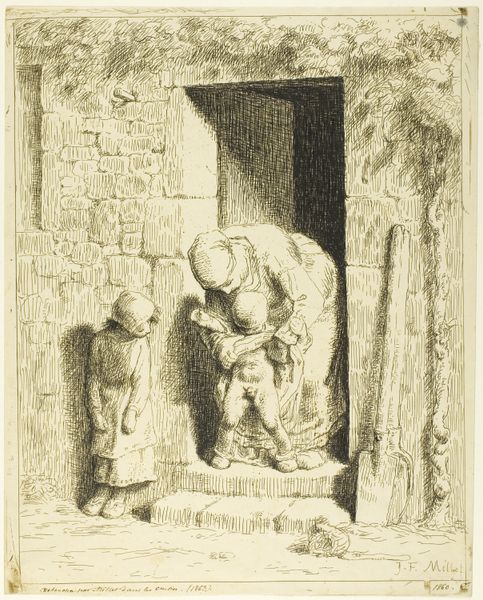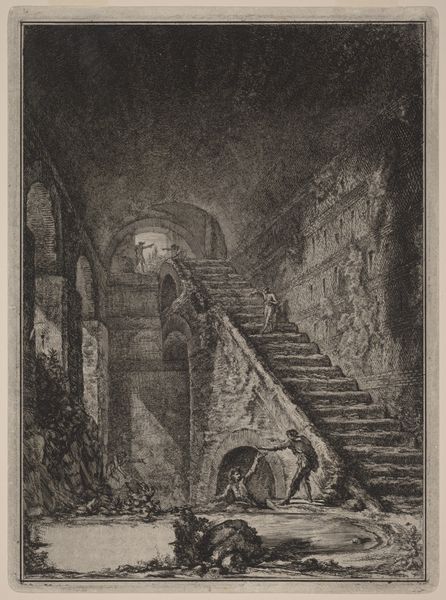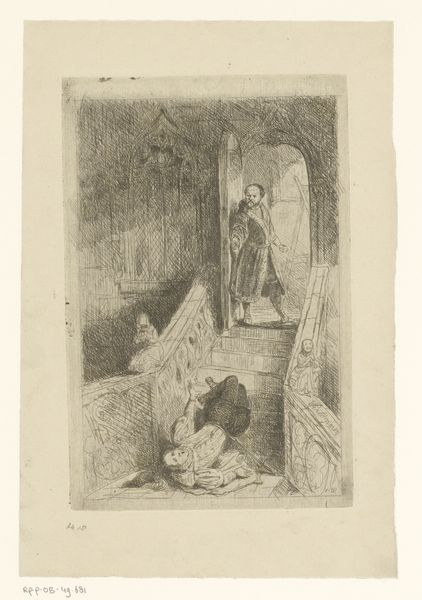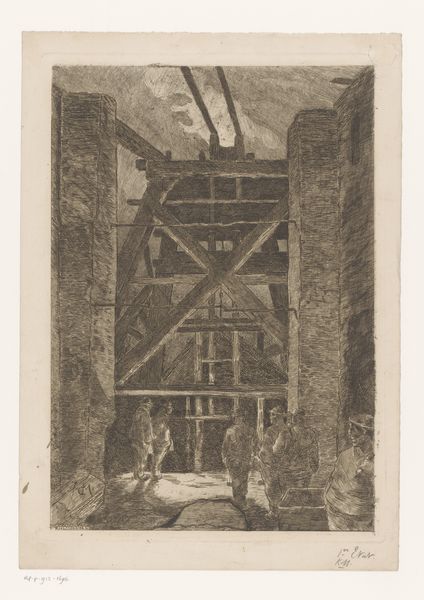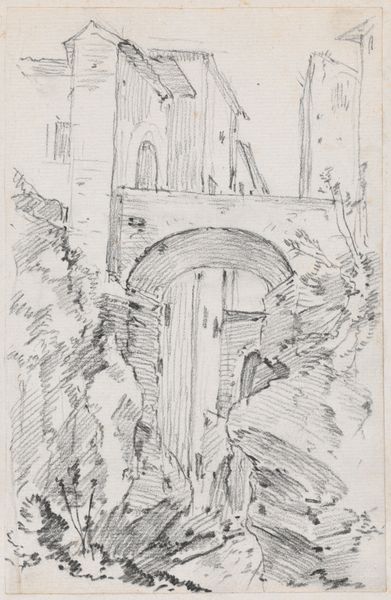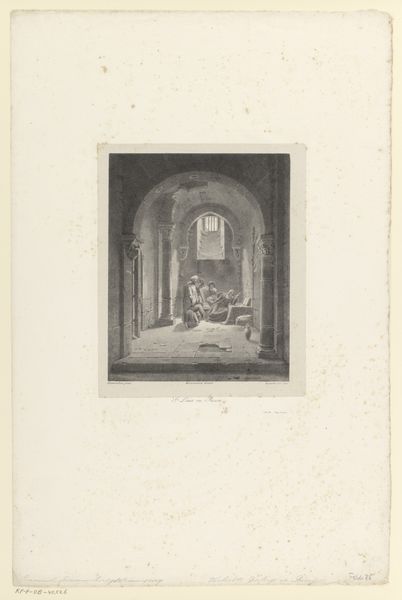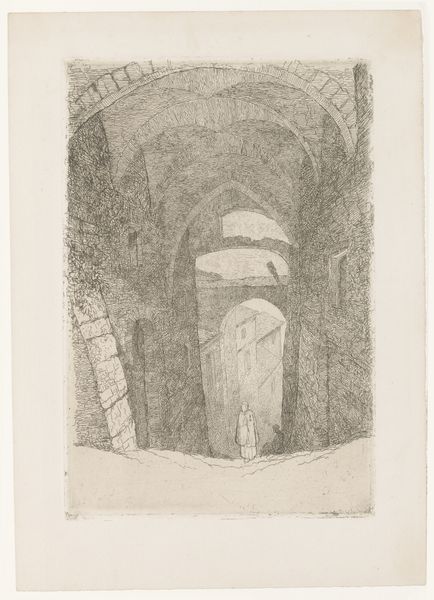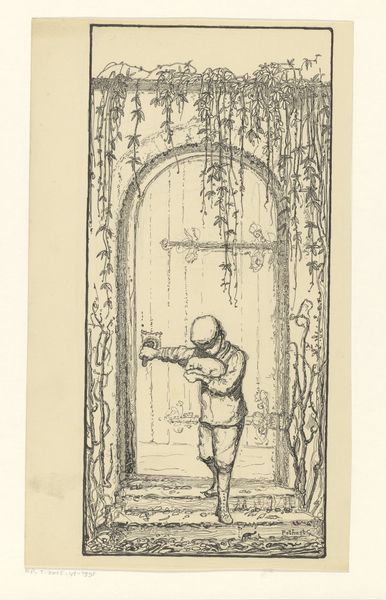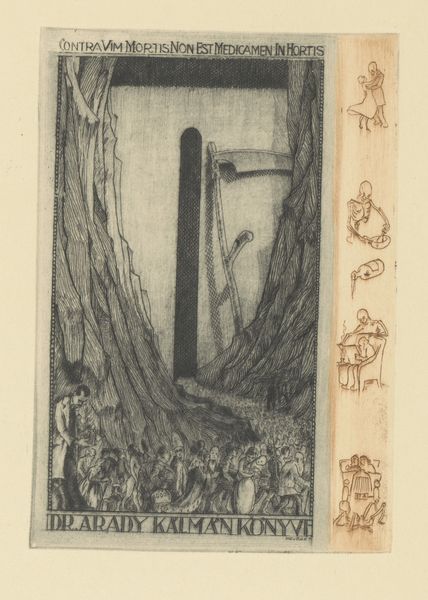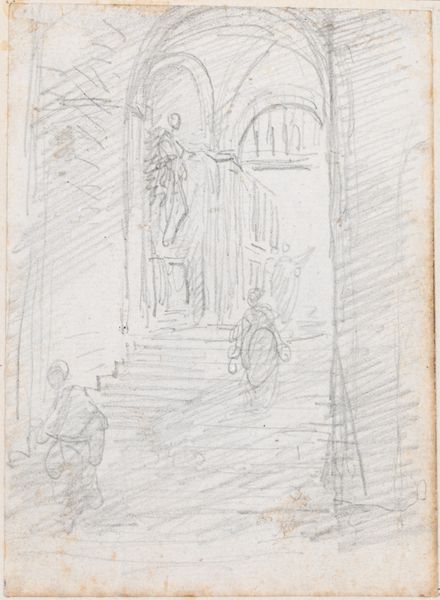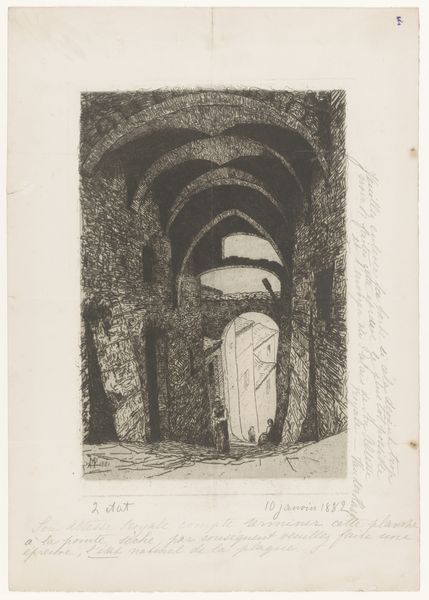![Abt Albrecht überrascht Diether beim MalenIllustration zu_ Heinrich Steinhausen, „Irmela. Eine Geschichte aus alter Zeit“, Prachtausgabe, Leipzig_ Georg Böhme, [1884], S. 11 by Wilhelm Steinhausen](/_next/image?url=https%3A%2F%2Fd2w8kbdekdi1gv.cloudfront.net%2FeyJidWNrZXQiOiAiYXJ0ZXJhLWltYWdlcy1idWNrZXQiLCAia2V5IjogImFydHdvcmtzLzViMTJhZTI0LTU2MDgtNDgyNy1iNGQ4LWM4YjM4NmU5NGZhYi81YjEyYWUyNC01NjA4LTQ4MjctYjRkOC1jOGIzODZlOTRmYWJfZnVsbC5qcGciLCAiZWRpdHMiOiB7InJlc2l6ZSI6IHsid2lkdGgiOiAxOTIwLCAiaGVpZ2h0IjogMTkyMCwgImZpdCI6ICJpbnNpZGUifX19&w=3840&q=75)
Abt Albrecht überrascht Diether beim MalenIllustration zu_ Heinrich Steinhausen, „Irmela. Eine Geschichte aus alter Zeit“, Prachtausgabe, Leipzig_ Georg Böhme, [1884], S. 11 c. 1884
0:00
0:00
Copyright: Public Domain
Curator: There's a hushed solemnity hanging in the air of this drawing. It feels monastic. Editor: It certainly evokes that atmosphere. This ink and pencil drawing, "Abt Albrecht überrascht Diether beim Malen," by Wilhelm Steinhausen, completed around 1884, illustrates a scene from the novel *Irmela*, and it is rooted in Romanticism's fascination with the medieval period. Curator: Yes, Romanticism! That explains the deliberate invocation of an imagined past. I see the scaffolding, the figures laboring high above, the two figures conferring by the door... they’re all bathed in this rather theatrical light, giving a sense of unfolding drama. It has a very clear narrative thread embedded in it. Editor: Exactly! And Steinhausen uses this setting, a church interior under construction, to comment on the societal and artistic shifts of his own time. Think about it: the medium itself, a drawing, made for mass reproduction in a book, democratizes a subject that was once solely the domain of the church and elite patrons. Curator: A subtle undermining of authority through visual storytelling, then? The abbot caught off guard perhaps hints at a tension between the Church's authority and the individual artist’s creative autonomy. That artistic tension vibrates from the original narrative out into our own socio-political understandings. Editor: Precisely. It is not only the figures themselves but their actions, made public through print, that carry subversive potential. Even the architecture works symbolically – the pointed arches, and stained glass suggesting established power while the scaffolding suggests that systems can be constructed or broken down. Curator: Interesting how Steinhausen pulls all these details together! To look closely reveals the building being worked on to mean that old structures and cultural orders can, literally, be reworked. The symbols act as social commentary. It definitely adds layers to how we can read this piece today. Editor: Indeed. An exploration into how visual culture can represent cultural shift. Curator: A striking example of the power of images to encode multilayered histories! Editor: A perspective that enriches our reading of visual history, allowing art and cultural study to shed light on our lives today.
Comments
No comments
Be the first to comment and join the conversation on the ultimate creative platform.
